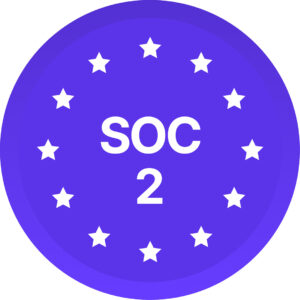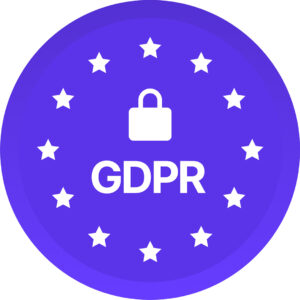When I started my career in HR, the conversation often centered around “getting a seat at the table.” Back then, we were transitioning from the traditional ‘personnel department,’ which was administrative and compliance-driven, to valuing employees as critical resources—akin to financial or operational assets—required to make an organization thrive. This shift was significant: it moved the focus from paperwork and policy enforcement to the recognition of people as a key driver of organizational success, but meeting and complying with increasing legislative demands remained a primary duty.
Now, after several decades of sitting at that table, the role of HR has evolved again. We’re not just compliance officers or administrators; we’re data-driven strategists influencing business outcomes. Globally, organizations are embracing the next phase of evolution: the move from Human Resources (HR) to People & Culture (P&C). This shift reflects a broader understanding that people are not just resources to be managed but individuals who shape culture, drive innovation, and align with organizational purpose.
From compliance-first to values-driven
In traditional HR, compliance was the cornerstone of the profession. Laws and regulations around labor, safety, harassment, anti-discrimination, and benefits were the primary focus. HR’s role was to ensure that organizations adhered to these requirements, minimizing legal risks and avoiding penalties. Compliance remains essential—it’s the foundation for fair and equitable treatment—but the mindset has shifted.
But there are problems associated with only focusing on legislative compliance, without addressing underlying attitudes and behaviors that influence organizational culture.
In traditional HR, compliance was the cornerstone of the profession. Laws and regulations around labor, safety, harassment, anti-discrimination, and benefits were the primary focus. HR’s role was to ensure that organizations adhered to these requirements, minimizing legal risks and avoiding penalties. Compliance remains essential—it’s the foundation for fair and equitable treatment—but the mindset has shifted.
But there are problems associated with only focusing on legislative compliance, without addressing underlying attitudes and behaviours that influence organizational culture.
- Minimal employee engagement: compliance focused organizations often lack a sense of belonging and purpose that employees need to feel valued and motivated. Are you inspired by an organization that states “We agree to meet legislative minimums”?
- Missed opportunities: An organization focused solely on “ticking boxes” rarely fosters the psychological safety required for employees to innovate and creatively collaborate to solve problems.
- Retention challenges: Increasingly we are seeing employees leave workplaces that do not align with their individual values and often focusing on compliance only fails to address employees expectations.
- Leadership disconnect: When HR practices around compliance are not locked in with overall organization vision, values and strategy, initiatives often fail to deliver the expected results and there is inconsistency across teams.
In the People & Culture framework, compliance is no longer the end goal. Instead, it’s seen as the “price of admission” upon which organizations can build a thriving, inclusive, and innovative workplace.
This shift away from a ‘compliance mentality’ reflects a recognition that employees expect more from their employers than meeting the minimum legal requirements. They seek alignment between organizational values and their own, making culture a competitive advantage.
Thriving workplaces go beyond compliance. They are environments where employees feel valued, engaged, and aligned with the organization’s goals. These workplaces foster innovation, improve retention, and drive long-term business success
From administrative tasks to organizational value alignment
As mentioned above in traditional HR, much of the work was transactional: processing payroll, managing benefits, resolving disputes, and ensuring policy adherence. These administrative tasks were often closely aligned with compliance, ensuring organizations avoided legal risks and maintained operational consistency. While, like compliance, these responsibilities remain essential, advancements in technology have significantly reduced the administrative burden. Tasks like payroll processing, benefits management, and even compliance tracking are increasingly automated or outsourced.
This shift has freed up People & Culture (P&C) professionals to focus on higher-value, strategic initiatives that drive organizational growth. Instead of being bogged down by paperwork, P&C leaders now have the capacity to address deeper organizational goals: fostering a positive employee experience, building inclusive cultures, and aligning workforce values with business objectives.
The People & Culture approach emphasizes aligning organizational values with employee experience, creating a workplace where people feel a sense of purpose and belonging. This alignment drives innovation, engagement, and retention. Key shifts include:
- Employee experience as a priority: P&C leaders focus on fostering environments where employees feel supported, engaged, and connected to the organization’s mission. This includes initiatives around well-being, inclusion, and career development.
- Culture as a business driver: Organizational culture is no longer a ‘soft’ concept but a measurable driver of performance. Research consistently shows that strong cultures improve retention, collaboration, and productivity.
- Purpose-driven leadership: P&C professionals partner with leaders to ensure that business strategies reflect the organization’s core values, creating alignment between leadership and the workforce.
By automating and streamlining the administrative and compliance-heavy tasks of traditional HR, technology has empowered P&C leaders to focus on building thriving workplaces. This evolution underscores how culture has become not just a responsibility but a strategic asset that fuels long-term success.
Embracing technology & data-driven insights
Today’s tools go far beyond streamlining recruitment processes and automating payroll. Technology now plays a central role in enabling organizations to gain data-driven insights into employee behavior, engagement, and performance, empowering leaders to make informed, strategic decisions.
The rise of remote and hybrid work has further accelerated the need for technology. Organizations now rely on a range of digital tools to maintain connectivity, foster collaboration, and measure engagement in dispersed teams. These tools help ensure employees, regardless of location, feel valued and included in the workplace culture.
Examples of how technology is reshaping People & Culture include:
- People analytics: Analytics platforms track trends in turnover, engagement, and productivity, turning raw data into actionable insights that help leaders identify and address workforce challenges.
- Engagement & feedback tools: Pulse surveys and sentiment analysis tools provide real-time insights into employee well-being and morale, enabling organizations to intervene before issues like burnout escalate.
- Collaboration & communication platforms: Tools like Slack, Microsoft Teams, and Zoom have become essential for maintaining connectivity, building relationships, and fostering inclusion in remote and hybrid settings.
- Learning & development platforms: Technology enhances workforce development by providing on-demand training, personalized learning paths, and virtual coaching opportunities that align with both individual and organizational goals.
- AI & predictive insights: While not the entire story, AI adds powerful capabilities. It forecasts attrition and skill shortages, personalizes learning and development, and even enhances feedback systems by identifying patterns that might otherwise go unnoticed.
The shift to People & Culture reflects a broader integration of technology into the workplace, not just to improve efficiency but to deepen understanding of the employee experience. Leaders now require data literacy to interpret these insights and translate them into strategies that align people goals with business outcomes.
By leveraging the full spectrum of modern tools—ranging from collaboration platforms to advanced analytics—People & Culture professionals are transforming the workplace into a space where employees thrive, no matter where or how they work.
How we help organizations build thriving workplaces
The shift from HR to People & Culture is ongoing, and its future will likely involve even greater integration of technology, culture-building, and strategic alignment. Here’s what we can expect:
- Increased personalization: Organizations will use data to tailor employee experiences, from customized development plans to personalized engagement initiatives.
- Focus on belonging: As workplaces become more diverse, P&C leaders will prioritize fostering belonging—going beyond inclusion to ensure that every employee feels valued and empowered.
- Continuous learning: With technology evolving rapidly, P&C leaders must embrace lifelong learning, keeping up with innovations in analytics, AI, and employee experience design.
Ultimately, the move to People & Culture reflects a recognition that people are not just resources to be managed but individuals who shape the future of organizations. By focusing on culture, alignment, and data-driven strategies, P&C leaders are redefining what it means to lead in the modern workplace. And as this evolution continues, the potential to create thriving, inclusive, and innovative organizations is limitless.
As organizations navigate this global shift, embracing People & Culture is not just a trend—it’s a business imperative. At Diversio, we’re here to support you in aligning your people strategy with business goals. We specialize in:
- Data collection and analytics: Gain actionable insights into employee engagement, inclusion, and representation using cutting-edge analytics platforms.
- Consulting services: Build tailored strategies that foster inclusive, high-performing workplaces and align culture with business outcomes.
- Employee development for behavioral change: Transform your workforce with targeted training programs that empower employees and leaders to drive lasting cultural change.
Ready to embark on your People & Culture journey? Let’s talk about how we can help you thrive. Reach out to us today to learn more about how we can work together to build a workplace where people and culture come first.
Our newsletter and blogs feature personal opinions and diverse perspectives on diversity and inclusion. While individual articles may not reflect every reader’s view, we value the diversity of opinions and respect our contributors’ insights.

